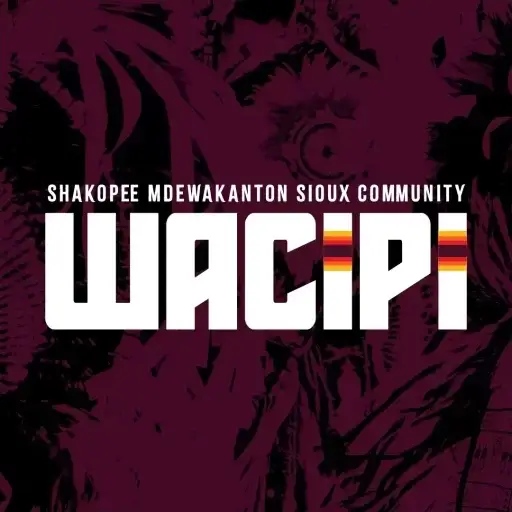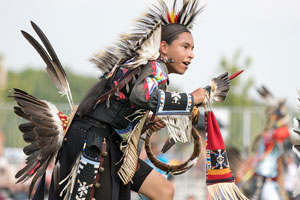 Traditional
Traditional
Men’s Traditional dance evolves from hunters and warriors. They danced out the story of their battles or hunting endeavors when they returned. The Northern and Southern dance styles are distinct from one another, each with a different contest. Many carry shields, weapons, staffs, and sticks to tell their story as they move. Most choose to wear bustles that are circular in shape.
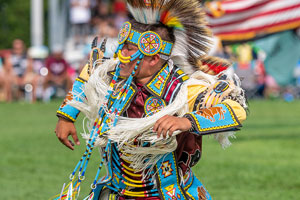 Grass
Grass
Men’s Grass dance is traditionally performed after moving camp, to help prepare the earth in a good way for the people. The look and dance style originated from the Plains. Men will usually wear long, flowing fringe of yarn or ribbons to represent the movements of tall grass in the wind. Dancers also wear a roach or wapeca (pronounced wah-pe-sha), fringed anklets, beadwork, and moccasins as part of their look, and they shake and sway while their feet perform a variety of slides, hops, and other moves.
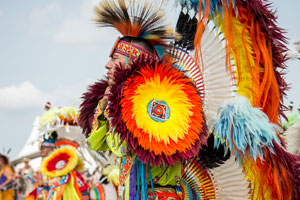 Fancy
Fancy
The Fancy dance originated in Oklahoma at the beginning of the 20th century and sparked contest dancing. Dancers wear bright and colorful bustles along with a roach with feathers, arm bustles, anklets, bells, and moccasins. The dance style consists of the standard double-step, with fancy footwork, acrobatics, speed, stamina, and showmanship on high display.
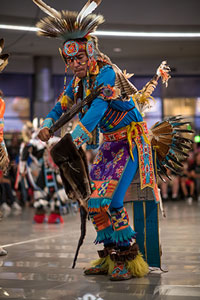 Chicken
Chicken
The Chicken dance is one of the oldest styles of dance, originating from the Blackfeet. Dancers wear skintight clothing, with smaller, old-fashioned bustles, often made with pheasant feathers and worn on the upper back and ankle bells and bell drops. Dancers’ movements imitate the prairie chicken mating dance.
